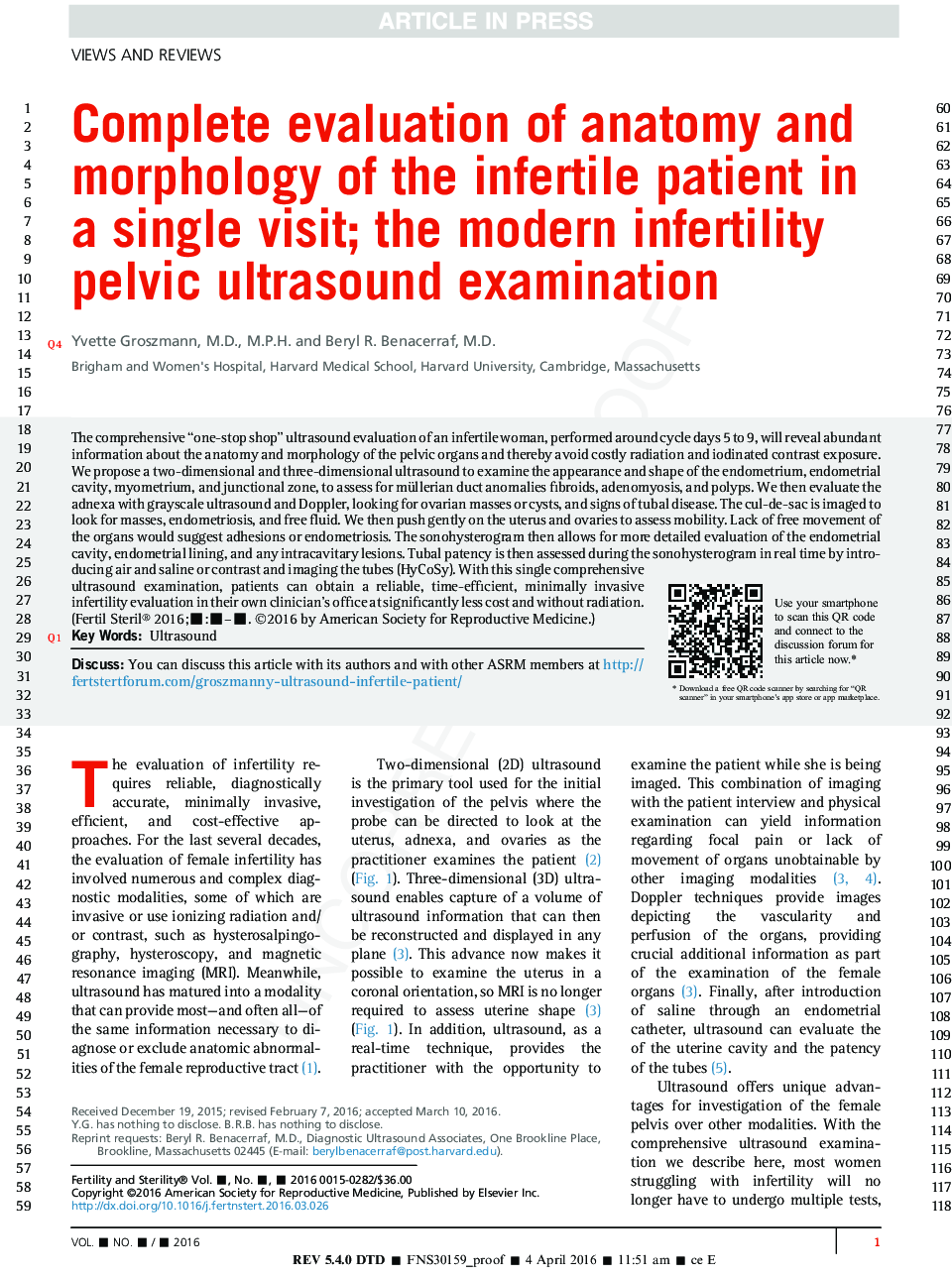| Article ID | Journal | Published Year | Pages | File Type |
|---|---|---|---|---|
| 6179420 | Fertility and Sterility | 2016 | 13 Pages |
Abstract
The comprehensive “one-stop shop” ultrasound evaluation of an infertile woman, performed around cycle days 5 to 9, will reveal abundant information about the anatomy and morphology of the pelvic organs and thereby avoid costly radiation and iodinated contrast exposure. We propose a two-dimensional and three-dimensional ultrasound to examine the appearance and shape of the endometrium, endometrial cavity, myometrium, and junctional zone, to assess for müllerian duct anomalies fibroids, adenomyosis, and polyps. We then evaluate the adnexa with grayscale ultrasound and Doppler, looking for ovarian masses or cysts, and signs of tubal disease. The cul-de-sac is imaged to look for masses, endometriosis, and free fluid. We then push gently on the uterus and ovaries to assess mobility. Lack of free movement of the organs would suggest adhesions or endometriosis. The sonohysterogram then allows for more detailed evaluation of the endometrial cavity, endometrial lining, and any intracavitary lesions. Tubal patency is then assessed during the sonohysterogram in real time by introducing air and saline or contrast and imaging the tubes (HyCoSy). With this single comprehensive ultrasound examination, patients can obtain a reliable, time-efficient, minimally invasive infertility evaluation in their own clinician's office at significantly less cost and without radiation.
Related Topics
Health Sciences
Medicine and Dentistry
Obstetrics, Gynecology and Women's Health
Authors
Yvette S. M.D., M.P.H., Beryl R. M.D.,
